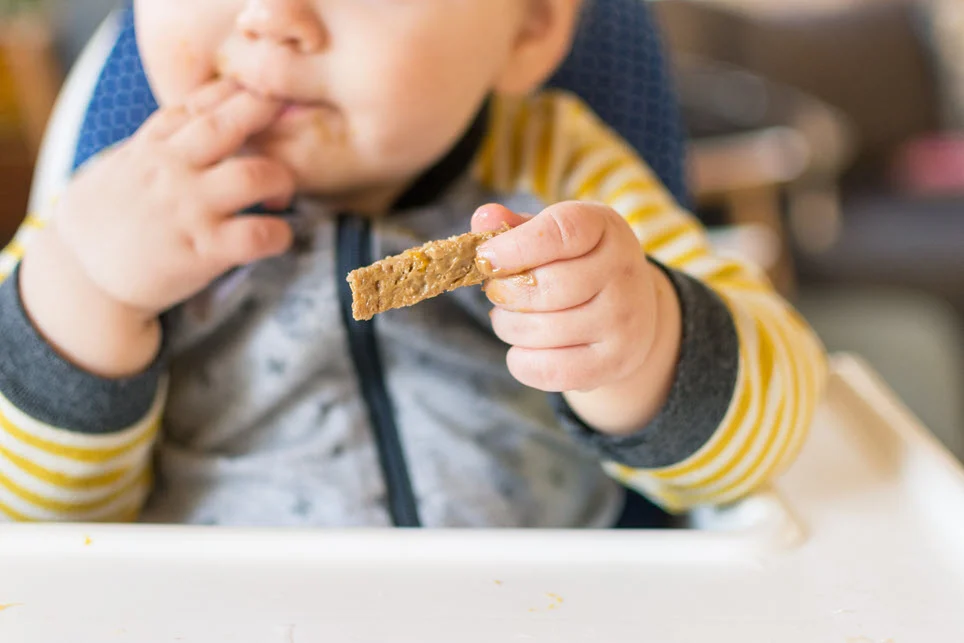A multipurpose food that is yummy and healthful is peanut butter. It can be eaten as a snack or a meal. Make peanut butter, jelly, and banana sandwich for lunch or spread a tablespoon of crunchy peanut butter on a celery stick.
Peanut butter is delicious and can be a cornerstone of any healthy diet, regardless of how people choose to spread it. The issue is that it also isn’t possible. This is due to the 3 million Americans who are allergic to tree nuts and peanuts. In actuality, among children with food allergies, a peanut allergy is the most prevalent allergy.
But according to current study, exposing the infant to peanuts at a young age can greatly lower the likelihood that they will develop a nut allergy.
Introducing Peanut Butter:
The American Academy of Allergy, Asthma, and Immunology advises delaying the introduction of peanut butter to the newborn until after they have successfully received other solid meals without experiencing any allergic reactions. Between the ages of 6 and 8 months, this can occur. Any child under the age of four should not be given whole peanuts or peanut pieces. Peanuts can cause choking.
Health Risks for Allergies:
Eight specific foods including peanuts are responsible for 90% of food allergy reactions. Allergies to peanuts, which typically appear in childhood, can last a lifetime. Even if people do overcome a peanut allergy, it could come back in the future.
A peanut allergy is more likely to develop in kids with other food sensitivities. The same is true for kids in households where food allergies are prevalent. Never provide peanuts to children who have tested positive for a peanut allergy.
Immune Responses:
Reactions to food allergies might be moderate or severe. They may also occur soon after eating the dish. The child will often respond to an allergen in one area of their body. However, if the child has Anaphylaxis, a severe, potentially fatal allergic reaction brought on by foods like peanuts, they will exhibit several symptoms at once.
Anaphylaxis necessitates urgent medical care at the closest emergency room. If the kid experiences a severe allergic reaction, they should contact their pediatrician to help identify the allergy’s source and course of action. Some symptoms may include nausea, vomiting, diarrhea and many more.
Baby Peanut Butter:
Smooth, thin peanut butter is what one should give to infants. It can be challenging for a baby to eat thick peanut butter. It may present a choking threat if it is difficult to swallow. Don’t serve genuine peanuts alongside chunky peanut butter. The child may choke on one of these. Add a little water to the peanut butter mixture to make it thinner and more paste-like in consistency.

Peanut Meals:
Certain recipes can be made y using peanut butter which goes well for the infant health. Some of them may include:
- Biscuits with peanut butter for teething.
- Butternut squash and peanut butter.
- Oatmeal thumbprint cookies from PB&J.
FAQs
How can parents get the infant to eat peanut butter?
Give the initial taste on a little spoon. Mix peanut butter with one safe food at a time for infants and young children under the age of four. Give no infant or young child under the age of four plain peanut butter.
How prevalent is infant peanut allergy?
According to recent studies, introducing the newborn to small amounts of peanut goods can help the youngster avoid becoming one of the 1 in 50 children who have a peanut allergy.
How long does it take a peanut allergy to manifest?
Within an hour of coming into contact with a nut, and maybe even sooner, symptoms frequently appear.
How much peanut butter should one eat before developing an allergy?
According to Haber, the amount of peanut protein needed to cause an allergic reaction in 1% of patients with peanut allergies was 0.052 milligrams, or about the weight of one grain of salt.
